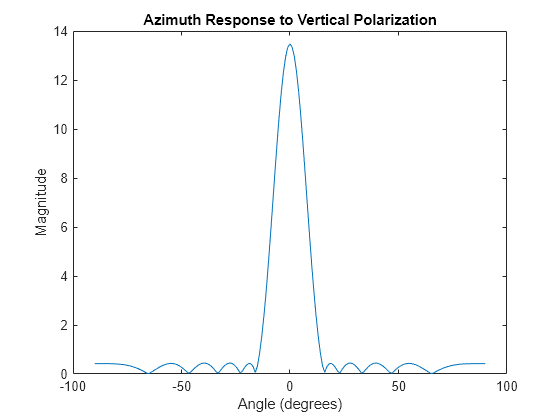phased.SphericalWavefrontArrayResponse
Description
The phased.SphericalWavefrontArrayResponse
System object™ calculates the complex-valued response of a sensor array to a spherical
wave.
To compute the response:
Create the
phased.SphericalWavefrontArrayResponseobject and set its properties.Call the object with arguments, as if it were a function.
To learn more about how System objects work, see What Are System Objects?
Creation
Syntax
Description
The
response = phased.SphericalWaveformArrayResponsephased.SphericalWaveformArrayResponse
System object
response with default property values.
response = phased.SphericalWaveformArrayResponse(Name,Value)phased.SphericalWaveformArrayResponse object with each property
Name set to a specified Value. You can specify
additional name-value pair arguments in any order as
(Name1,Value1,...,NameN,ValueN).
Enclose each property name in single quotes.
Example: response =
phased.SphericalWaveformArrayResponse('SensorArray',phased.URA([10,20],'ElementSpacing',[0.25,0.25]),'PropagationSpeed',physconst('LightSpeed'))
creates a phased.SphericalWaveformArrayResponse
System object for a 10-by-20 uniform rectangular array (URA) with element spacing set to
0.25 meters The propagation speed set to the speed of light.
Properties
Usage
Description
Input Arguments
Output Arguments
Object Functions
To use an object function, specify the
System object as the first input argument. For
example, to release system resources of a System object named obj, use
this syntax:
release(obj)
Examples
Extended Capabilities
Version History
Introduced in R2021b

